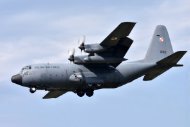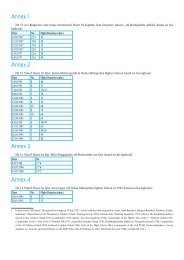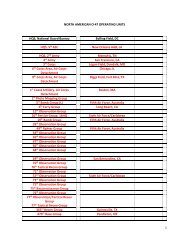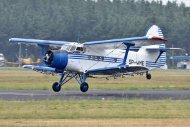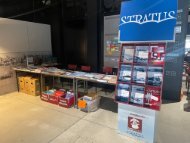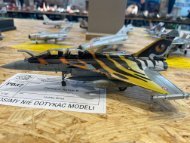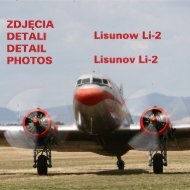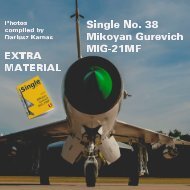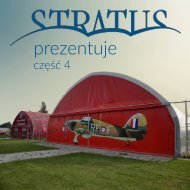B-17 CC Additional Material by Robert M Stitt
Boeing B-17 Fortress in RAF Coastal Command Service Second Edition Robert M Stitt Additional Material
Boeing B-17 Fortress in RAF Coastal Command Service
Second Edition
Robert M Stitt
Additional Material
- No tags were found...
You also want an ePaper? Increase the reach of your titles
YUMPU automatically turns print PDFs into web optimized ePapers that Google loves.
Sgt Joseph Edouard Roch<br />
Boudreault. (Laurette<br />
Chagnon)<br />
Laurette Chagnon: “Roch sent most of his pay cheque to my mother to help her make both ends meet<br />
for our large family. Thanks to my big sisters and brothers, I could keep studying nursing and public health.<br />
In 1944, my mother received $354.00 that Roch had willed to her.”<br />
“In 1997, I received an invitation to attend the annual 220 Squadron reunion, this time held in Stratford-on-Avon.<br />
We had learned that Maureen Diehl, the caretaker of the cemetery in the Azores, was trying to<br />
trace our family… so we combined the trip to England with one to The Azores. At Stratford we met, for the<br />
first time, the courageous men of 220 Squadron. They reminisced about their World War Two experiences<br />
and gave us our first opportunity to find out what had happened to Roch.<br />
“We learned that his aircraft was packed with food, cigarettes and other things not available in England<br />
and there was a rumour in Canada that Roch was on his way to England to be decorated. The reunion organizer<br />
[former 220 Squadron WOp/AG] Joe Ayling confided in me: ‘You know that if Roch had lived you<br />
could have had links with my family.’ It turned out Roch was very fond of Joe’s sister and was hoping to visit<br />
her after the plane arrived in England.<br />
“Roch loved flying so much. Aeroplanes meant adventure, challenge, a passion for something new and<br />
extraordinary. Although he died in an aeroplane, he was at the same time realizing his greatest passion.”<br />
With special thanks to Laurette Chagnon, sister of Roch Boudreault.<br />
Jack Delarue on gaining his<br />
pilot’s flying badge, April<br />
1941. (via Edgar Delarue)<br />
The house at 3 Dangar<br />
Street, Lindfield, New South<br />
Wales, where Jack Delarue<br />
was born on March 24,<br />
1916. (via Edgar Delarue)<br />
Jack Edmond Delarue<br />
‘That’s Jack Delarue! A fantastic cricketer… bowled left-handed and batted with his right. A very<br />
good all-round sportsman and a good friend to have.’ That is how 91-year-old Group Captain Paul<br />
Metzler, RAAF retired, responded on being shown photograph of his former school mate while visiting<br />
a new exhibit at the Historical Society Rooms, located at Old Gordon Public School where both were<br />
pupils in the 1990s.<br />
Jack Edmond Delarue was born in Lindfield, New South Wales, Australia – some 12 miles north of<br />
Sydney – on March 24, 1916. He was the first child of commercial traveler Leopold Emile Victor Delarue<br />
and his wife Hilda Majel Cliff. He had two bothers and one sister.<br />
A keen sportsman, who grew to love cricket and golf, Delarue attended the local primary school in<br />
the Ku-ring-gai District until his teachers tried to dissuade him from being left-handed. Outraged, his<br />
mother moved him to the main school at Gordon. On leaving school, Delarue joined the Rural Bank of<br />
New South Wales as a clerk.<br />
On August 19, 1940, Delarue enlisted as an Aircraftsman 2 at 2 Initial Training School at Bradfield<br />
Park, New South Wales, joining Course 4(P). Two months later, he was posted to 8 Elementary Flying<br />
Training School at Narrandera to begin training on de Havilland Tiger Moths. Over 3,800 student pilots<br />
trained at Narrandera under the British Commonwealth Air Training Plan.<br />
With his primary training completed after 51:40 hours of flying, Delarue departed Sydney for<br />
Canada on December 28, 1940, and on arrival was attached to the RCAF for training on Avro Ansons<br />
with 7 Service Flying Training School at RCAF McLeod, Alberta. He received his pilot’s flying badge on<br />
April 14, 1941, was promoted to Sergeant Pilot, and recommended for flying bomber types. Remustered<br />
as an Airman Pilot, Delarue was attached to the RAF and posted to 31 General Reconnaissance School<br />
at Charlottetown, Prince Edward Island, to continue training on Avro Ansons in preparation for joining<br />
RAF Coastal Command and the vital campaign against the U-boats. He flew a total of 131:40 hours on<br />
Ansons.<br />
Delarue departed Halifax <strong>by</strong> ship for the United Kingdom on August 15, 1941, and was posted to<br />
1 (Coastal) Operational Training Unit at RAF Silloth on October 13, to begin training on Hudsons in<br />
advance of joining an operational squadron – two months later, on December 25, he was posted to 206<br />
Sqn at RAF Aldergrove, Northern Ireland. His first operational<br />
flight took place on February 20, when a flew as<br />
second pilot with Flt Sgt S L A Goodson on an anti-shipping<br />
sweep in Hudson AM566 ‘F’.<br />
On February 28, Delarue was promoted to Pilot Officer<br />
and from March 7 was detached to RAF Stornaway<br />
as part of a strategy to position the relatively short-range<br />
Hudson closer to the convoy routes and U-boat operating<br />
areas. His first flight as captain took place on April<br />
12, a six-hour sweep in AM711 ‘E’, and on the night of<br />
June 25/26 he led one of twelve crews provide <strong>by</strong> 206<br />
Sqn for the third so-called ‘1,000-bomber raid’. Taking<br />
off from RAF Donna Nock, a satellite field for RAF North<br />
Coates on the Norfolk coast, he dropped his bombs on<br />
the city of Bremen, although it proved impossible be-<br />
6



